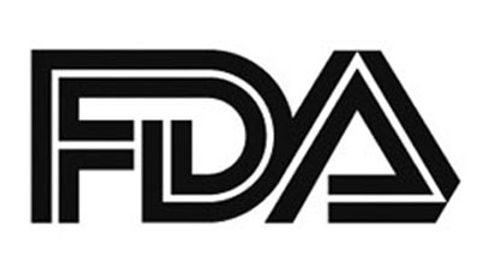Rolling NDA Planned for Submission to FDA for Pacritinib in Myelofibrosis With Severe Thrombocytopenia
A rolling submission of a New Drug Application has been initiated for pacritinib, seeking FDA approval for the drug as treatment of patients with myelofibrosis with severe thrombocytopenia.

A rolling submission of a New Drug Application (NDA) has been initiated for pacritinib, seeking FDA approval for the drug as treatment of patients with myelofibrosis (MF) with severe thrombocytopenia defined as having platelet counts less than 50 x 109/L, CTI BoPharma, Inc announced in a press release.1
The NDA will be supported by findings from the phase 3 PERSIST-1 and PERSIST-2 clinical trials (NCT01773187, NCT02055781).
"Today we are pleased to announce the start of a rolling NDA submission that seeks to address the important unmet medical need of myelofibrosis patients with severe thrombocytopenia, a population that includes both front-line treatment-naïve patients and patients with prior exposure to JAK2 inhibitors," said Adam R. Craig, MD, PhD, president and chief executive officer of CTI Biopharma, in a statement. "We have started pre-commercial activities and are planning for a commercial launch in 2021, subject to Priority Review."
In PERSIST-1, pacritinib was evaluated against best available therapy (BAT) with a primary end points of spleen volume reduction and a secondary end point of total symptom score (TSS) reduction. The drug demonstrated significant and sustained spleen volume and symptom reduction in the study, hinting that pacritinib could be a potential treatment option for patients with MF who present cytopenia at baseline and have limited treatment options. These findings were later confirmed in the PERSIT-2 study, in which pacritinib was administered at either 400 mg or 200 mg versus BAT.2
PERSIST-2 was a randomized, controlled, phase 3 study of 311 patients with MF and thrombocytopenia, a mean age of age, 63.70 years. Fifty-five percent of the population was male and 45% was female. Notably 149 (48%) of the subjects enrolled had prior ruxolitinib, which was also the most common form of BAT used in the study. In the intention-to-treat population, there were 74 patients in the pacritinib arm versus 72 in the BAT arm after 104 patients received pacritinib 400 mg discontinues along with 106 of those received pacritinib 200 mg, and 98 of those receiving BAT.3
In addition to ruxolitinib, which was given to 44 patients, BAT care included hydroxyurea for 19 patients, and a prednisone and/or prednisolone for 13 patients. The remaining 19 patients were monitored with the “watch and wait” approach.
The results of the study showed that 18% of the patients who received pacritinib had a spleen volume reduction of 35% or more compared with only 3% of the BAT arm. It was noted in the published data that only 1 patients in the BAT arm who received ruxolitinib had a spleen volume reduction. The benefit with pacritinib was observed across the study subgroups, which included patients of different sex, age, JAK2 V617F mutation status, prior treatment with JAK2 inhibitors, and baseline cytopenias.
TSS reduction of 50% or more was also observed in the study in 25% of the pacritinib arms compared with 14% of the BAT arm, at week 24. Notably, patients who received ruxolitinib as BAT fared better than others in the BAT arm in terms of TSS. Overall, the median percent change in TSS at week 24 was −27% for the pacritinib 400 mg arm , −41% for the pacritinib 200 mg arm, and −15% for the BAT arm. It was also noted that the median percent change in individual MPN-SAF TSS 2.0 symptom scores favored the pacritinib arm.
There were differences in overall survival between the 3 arms that did not met the prespecified threshold for statistical significance. Specifically, the hazard ratio (HR) for pacritinib 400 mg versus BAT 1.18; 95% CI, 0.57- 2.44and for pacritinib 200 mg twice daily versus Bat, the HR was 0.68; 95% CI, 0.30-1.53.
In terms of safety, nonhematological adverse events (AEs) were seen in ≥15% of patients. These AEs included gastrointestinal adverse events, fatigue, peripheral edema, and dizziness, in the pacritinib arm as well as abdominal pain, fatigue, diarrhea, and peripheral edema, in the BAT arm. Most of these events were grade 1/2. The most frequently seen non-hematologic AE in the pacritinib arm was diarrhea, which occurred in 53% of the group. Thrombocytopenia was the most common AE leading to treatment discontinuation in all study arms.
Overall, pacritinib was well tolerated and gastrointestinal AES were low grade and manageable. Twenty-nine patients in the study discontinued treatment to AEs. Twelve patients died during the study.
As hypothesized, the study found that pacritinib is a treatment option for patients with MF who have baseline thrombocytopenia.
References:
1. CTI BioPharma initiates rolling submission of New Drug Application (NDA) for pacritinib in myelofibrosis patients with severe thrombocytopenia. News release. CTI BioPharma, Inc. https://bit.ly/3iSx8WU
2. Mesa RA Vannucchi AM, Mead A, et al. Pacritinib versus best available therapy for the treatment of myelofibrosis irrespective of baseline cytopenias (PERSIST-1): an international, randomised, phase 3 trial. Lancet Haematol. 2017;4(5):e225-e236. doi: 10.1016/S2352-3026(17)30027-3.
3. Mascarenhas J, Hoffman R, Talpaz M, et al. Pacritinib vs best available therapy, including ruxolitinib, in patients with myelofibrosis a randomized clinical trial. JAMA Oncol. 2018;4(5):652-659. doi:10.1001/jamaoncol.2017.5818